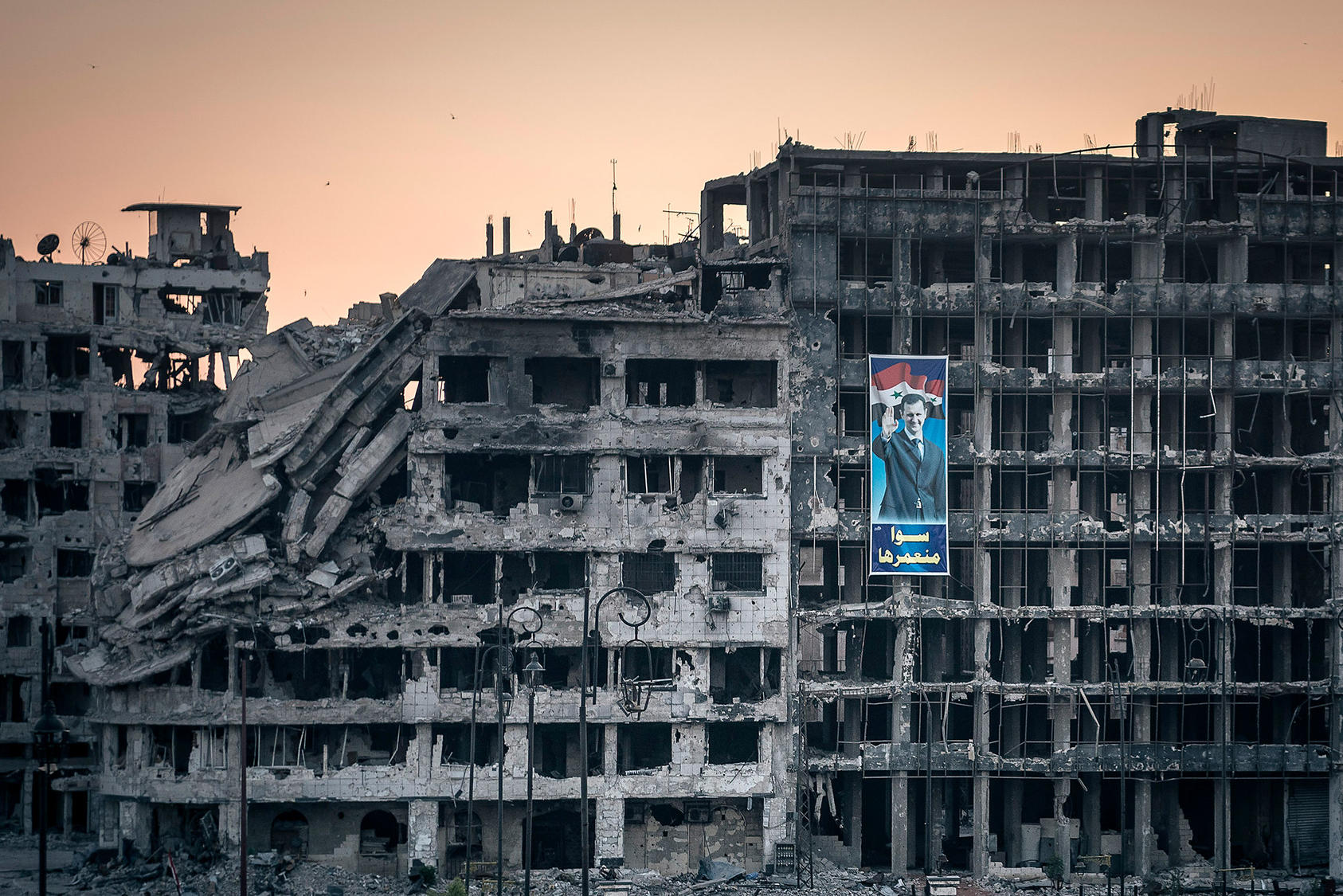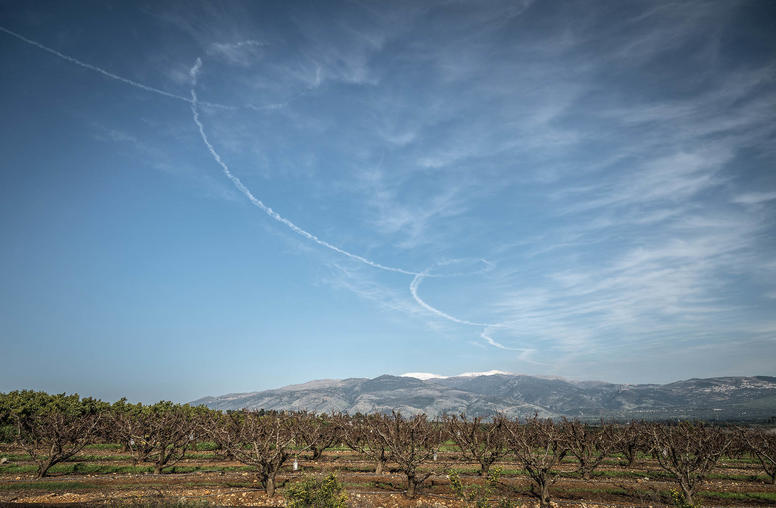Syria’s Stalemate Has Only Benefitted Assad and His Backers
On the conflict’s 12th anniversary, everyday Syrians face a dire humanitarian situation, while Assad’s grip on power holds steady.
Twelve years into Syria’s devastating civil war, the conflict appears to have settled into a frozen state. Although roughly 30% of the country is controlled by opposition forces, heavy fighting has largely ceased and there is a growing regional trending toward normalizing relations with the regime of Bashar al-Assad. Over the last decade, the conflict erupted into one of the most complicated in the world, with a dizzying array of international and regional powers, opposition groups, proxies, local militias and extremist groups all playing a role. The Syrian population has been brutalized, with nearly a half a million killed, 12 million fleeing their homes to find safety elsewhere, and widespread poverty and hunger. Meanwhile, efforts to broker a political settlement have gone nowhere, leaving the Assad regime firmly in power.

USIP’s Mona Yacoubian discusses the status of the conflict 12 years in, the dire humanitarian situation, why some countries in the region are choosing to normalize with the Assad regime and how to hold it accountable.
What is the status of the Syrian conflict as it approaches its 12th anniversary?
The conflict in Syria is at a stalemate with little prospect for a political settlement any time soon. The Assad regime remains entrenched in power, controlling roughly 70% of Syrian territory. Levels of violence have diminished significantly from the conflict’s apex when the regime — backed by Russia and Iran — launched indiscriminate, large-scale offensives to claw back territory. While violence has diminished, small-scale skirmishes continue across conflict lines in northwest and northeast Syria. More broadly, the Syrian civil war has evolved into an internationalized conflict, with five foreign militaries — Russia, Iran, Turkey, Israel and the United States — engaging in the Syrian battlespace as well as ISIS remnants undertaking periodic attacks.
The regime operates with impunity in areas under its control. Accused of systematic atrocities and war crimes, the Assad regime is notable for its brutality. Moreover, in its most recent report, Freedom House highlighted Syria’s absence of political rights and civil liberties, characterizing it as “one of the world’s most repressive regimes.” Yet, efforts at accountability remain stymied. The United Nations Security Council has been impeded from pursuing justice through the International Criminal Court (ICC) given vetoes by Russia and China. Efforts to address Syria’s widespread abuses through European courts under the principle of universal jurisdiction have yielded limited but important success. Last year a German court convicted a former Syrian intelligence officer for crimes against humanity, sentencing him to life in prison for his role in torturing and murdering prisoners in a Damascus detention facility. The landmark case could pave the way for additional convictions in other European countries where universal jurisdiction has been adopted.
Meanwhile, efforts to negotiate a political solution to the conflict as envisioned by U.N. Security Council Resolution 2254 have been stalled. Progress has been minimal on key elements that would build toward a political settlement including establishing a nationwide cease-fire, drafting a new constitution and resolving the fate of thousands of detained, disappeared or missing Syrians. The Constitutional Committee, a U.N.-established committee comprised of Syrian government, opposition and Syrian civil society members in equal numbers, has not met since March 2022, a casualty of Russian intransigence following its invasion of Ukraine last February.
What is the humanitarian situation like in Syria today?
While levels of violence in Syria are relatively low, humanitarian suffering is at an all-time high, with humanitarian agencies reporting the highest levels of need since the conflict began. Syria today is a fractured and impoverished country with the highest number of internally displaced persons (IDPs) — 6.8 million — in the world. More than 90% of Syrians live below the poverty line, and food insecurity is at record levels.
The Syrian economy is collapsing, driven by more than a decade of war, regime corruption, sanctions and economic meltdown in neighboring Lebanon. The Syrian lira has depreciated by an estimated 75%, with the lira devalued six times in the past two years. A cholera outbreak late last year underscored the deepening fragility of Syria’s health, water and sanitation systems. The catastrophic earthquakes in Turkey last month have only compounded Syria’s humanitarian crisis, with more than 7,000 Syrians killed and an estimated 5.3 million left homeless in the aftermath of the quakes. Concerns are mounting regarding the possibility of a new cholera outbreak in northwest Syria, the area most adversely affected by the earthquake, a region that is particularly vulnerable as it is inhabited by a large numbers of IDPs.
Why are countries in the region deciding to normalize relations with the Assad regime in spite of its dismal human rights record?
Governments in the region have slowly and fitfully embarked on normalization efforts with the Assad regime over the past few years. Regional leaders likely calculate that Assad will remain in power for the foreseeable future and are seeking to integrate Syria into the region on their terms. For some countries, normalization is viewed as a counterweight to deepening Iranian influence in Syria, while others are looking to build back economic ties as their countries’ economies suffer significant downturns.
Normalization efforts began in earnest in late 2018 when the United Arab Emirates decided to re-open its embassy in Damascus. Several other countries in the region, including Egypt, Jordan, Bahrain and Oman, have undertaken tentative probes toward diplomatic opening. Perhaps the most dramatic example of the region’s warming ties with Syria occurred in March 2022 when Assad visited the UAE on the anniversary of the Syrian conflict, his first visit to an Arab country since the start of the conflict.
Last month’s earthquakes appear to have accelerated normalization. Assad leveraged sympathy for Syrians following the quakes, and governments in the region similarly exploited the catastrophe for political cover to deepen ties. Foreign ministers from Egypt, Jordan and the UAE visited Damascus in the days after the quakes. Assad also visited Oman later in February. Most notably, Saudi Arabia sent assistance to the Syrian government, with a Saudi plane landing in Aleppo for the first time since 2011. The Saudi foreign minister has also hinted that Syria could be readmitted to the Arab League; Saudi Arabia is slated to host the Arab League summit later this year.
Similarly, Turkey has been exploring normalization with the Assad regime. In January, Turkish President Erdogan voiced his interest in meeting with Assad. Syrian and Turkish defense ministers met in Moscow late last year as part of a gradual warming in ties. This week Syrian, Turkish and Iranian deputy foreign ministers are scheduled to meet in Moscow in preparation for a potential foreign ministers meeting, which would be yet another step toward full normalization of relations.
What steps can the international community take to ensure that the Assad regime does not return to the international fold devoid of consequences for its behavior?
As more countries in the region normalize with Assad, demands for accountability should not be put aside. While there are real limits to accountability efforts, the international community can still pursue some measures to address harms done and also seek to prevent future violations. At a minimum, countries in the region that open ties with Assad should seek some shift in behavior that improves conditions on the ground. For example, the UAE in its recent outreach to Assad reportedly played a key role in compelling Assad to open two additional border crossings to facilitate greater access for humanitarian aid following the earthquake.
It will also be important for the international community to hold firm against involuntary Syrian refugee returns. A 2021 Amnesty International report documented significant abuses committed by Syrian security forces against returning refugees, underscoring the peril returning refugees face. As neighboring countries resume ties with Syria, pressure to return refugees will undoubtedly grow, particularly as host country economies struggle. Some will argue the war in Syria is ending and refugees must go home. Yet, Syrian refugees do not feel safe returning to Syria if Assad remains in power, and under international law, their return must be safe, voluntary and dignified. It is incumbent on the international community to ensure those norms are respected by insisting that Syrian refugee hosting countries continue to fulfill their international legal obligations.
Finally, while instruments for accountability are limited, member states of the United Nations should follow through on the creation of a mechanism that would seek to clarify the fate of thousands of Syrians who have been missing over the past 12 years of conflict. U.N. Secretary-General Antonio Guterres issued a report last August recommending the establishment of entity that would bolster efforts to address the issue of the disappeared, detained and missing in Syria. Following through on the secretary-general’s recommendation would fulfill an important demand of Syrian families of disappeared who seek information on their loved ones. It would also serve as an important step forward on the long path toward justice and accountability in Syria.



